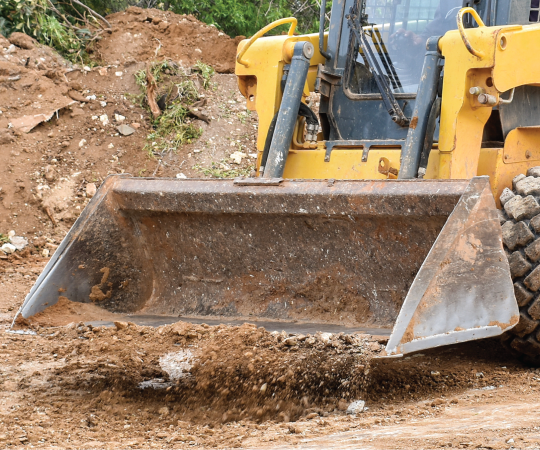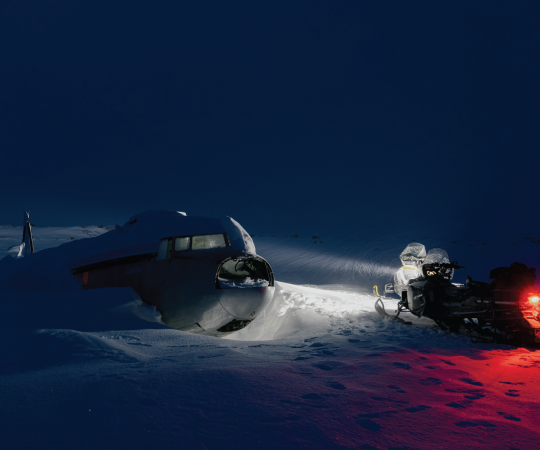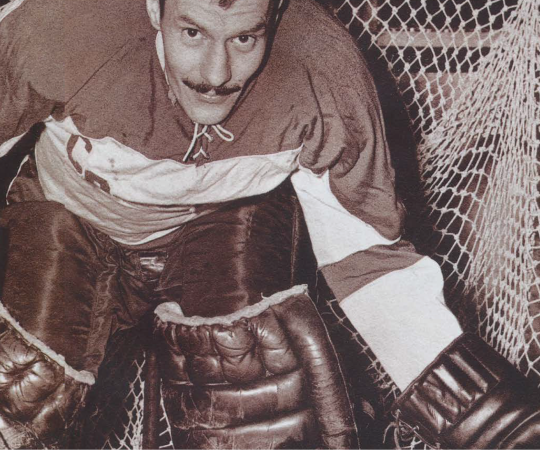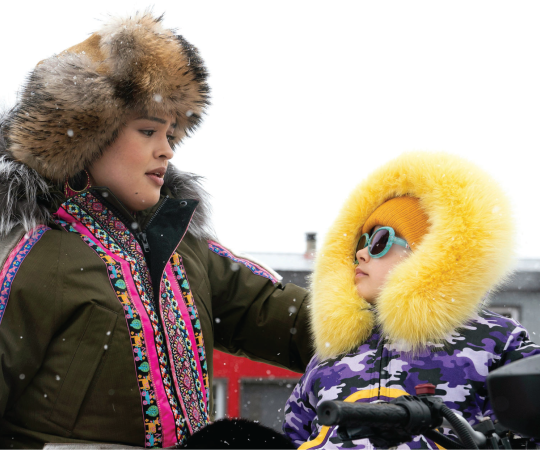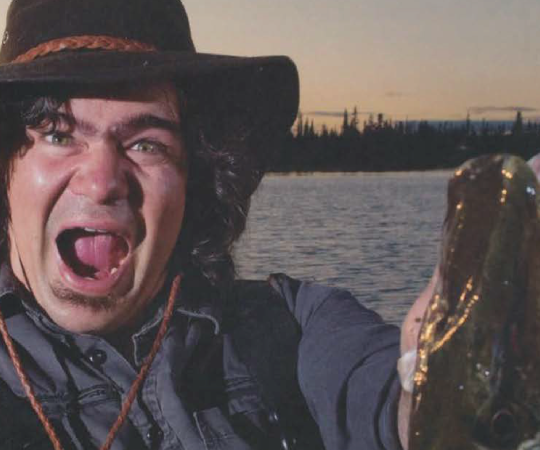Kiah Vail didn’t think Fort Smith could run out of firefighting equipment.
“Our warehouses always seemed endless whenever I’ve been in them,” says Vail, a 22-year-old firefighter who spent this past summer on the frontlines of the Northwest Territories’ record-breaking wildfire season.
Now, she feels differently. “There were points when I was on the line this summer, we had run out of gear. I had a couple of pumps that I was passing around multiple crews just because we were so short of things.”
Summer 2023 saw the worst wildfire season on record in Canada. The NWT was no exception — about 300 fires burned more than four million hectares of land, dozens of homes, forced about two-thirds of the territory’s population to flee and claimed the life of one firefighter.
Vail was there, battling the blaze on the frontlines. It was the biggest challenge of this Northern firefighter’s young career, and an experience she won’t ever forget.
If you’ve moved to the NWT in the past decade, you’ll inevitably have heard comments about the 2014 wildfire season — the territory’s previous worst. That year saw more fires than in 2023, but burned fewer hectares and caused less damage.
Vail remembers it well; the “summer of orange sky” and the dense smell of campfire that year. But up until quite recently she never considered becoming a wildland firefighter.
In 2020, the COVID-19 pandemic interrupted her studies at the University of Ottawa. She decided to return to the NWT and look for a job through the territory’s summer student employment program. She wanted something that was outdoors and hands-on; as a varsity athlete, she also liked that firefighting had a physical test to pass before even getting an interview.
“I passed it, got the interview and pretty well fell in love with the job since that very first summer,” she says.
Vail climbed the ranks quickly — she spent her first two years as a crew member and then was promoted to crew leader for the past two seasons. Crews generally work as teams of four, and one of them that Vail led this summer was made up entirely of Indigenous women. She says it was the first time since the 1980s that the territory saw an all-woman firefighting crew.
Being part of something that can break down barriers is meaningful, says Vail. Still, working in a male-dominated industry has meant having to stand up for herself and other women occasionally. Usually hard work is enough to put a stop to any critical looks from male colleagues. But often, she says, you just sort of learn to ignore it.
“It's kind of a terrible thing,” she explains, “but you're not always able to address it, especially when maybe you're on the lower rung.”
Despite her short career, this summer saw Vail make another jump and take on more responsibility during two of the year’s most devastating fires.
In May, a wildfire flared up to the east of the Kátł'odeeche First Nation reserve. The fire forced the evacuation of the reserve and the Town of Hay River, and unfortunately burned nearly 20 buildings. It was the first time Vail lost houses in a fire she’d been working on.
She says it was stressful and heartbreaking to try and salvage what they could knowing that some residents would return to nothing. She worked shoulder-to-shoulder with some of those same residents.
Seeing the grieving on her colleagues’ faces, but also their determination, gave the crews extra motivation to protect the rest of the community as best they could, she says.
That fire was Vail’s first chance to lead multiple crews as one of the division supervisors. It took the firefighters about 10 days to get the situation to a state that allowed residents to return. Once it was all over, Vail says they thought they’d seen the worst of the season.
“We had no idea. That was just like the tip of the iceberg.”
Later in the summer, hundreds of fires sparked up across the territory. In mid-August, one the territory’s biggest fires exploded in the South Slave. High winds and hot, dry weather drove the flames more than 40 kilometres east toward Hay River in a single day. It also engulfed the small town of Enterprise, turning it to rubble and ash.
Equipment and crews were already stretched thin, even as the situation on the ground worsened. For the second time that season, a wildfire — this one bigger, hotter and meaner than the last — forced Hay River and Kátł'odeeche residents to flee their homes.
Vail was deployed once again to protect the two communities. While there, one of the supervisors was pulled away to address another fire that flared up elsewhere. Vail volunteered to take his spot, viewing it as a challenge to “up the ante” and help at a greater scale. She was now responsible for a major fireline that stretched 30 kilometres from Great Slave Lake to Paradise Gardens in Hay River, overseeing anywhere from three to eight crews from different parts of the country.
Time and weather were her biggest enemies. Wind acts like bellows — as it flares up a fire, smoke billows and embers fly, and the time needed to battle a blaze grows longer and longer.
The crews needed to create a burnt perimeter around the fire’s edge — a blackline. Usually a perimeter width of 30 metres is enough to limit a wildfire’s growth, but the sheer size and intensity of the second fire that threatened Hay River and Kátł'odeeche meant that crews had to create a one-kilometre-wide blackline. Along with other tactics, it took firefighters about a month to control the fire enough for residents to go home.
As she was trying to save other communities, Vail’s own was also being threatened. A grouping of fires that burned large swaths of Wood Buffalo National Park crept northward and converged near Fort Smith and Fort Fitzgerald resulting in the evacuation of both communities. Vail’s mom and sister left, but her father stayed behind in Fort Smith to support the firefighting efforts. One day she received a text message from him saying the flames were only a kilometre from their house. Thankfully, the crews battling that fire managed to keep it at bay and, after five weeks, residents were able to return home.
The responsibility she carried in the face of these disaster was a heavy weight, but Vail says she never felt intimidated. “If I did, I don't think I would be in the position that I was in.” She attributes her confidence to her mentors — many of them Indigenous — and years of knowledge they’ve shared.
As the last of the fires are snuffed out or go underground for the winter, Vail is now working on cleaning gear and refurbishing equipment to prepare for next season. The empty warehouses are restocked, but the battle damage is visible.
“Seeing the cleaning in the aftermath, I’m like, ‘Wow, this was just chaos,’” she says. It’s a chance to catch her breath and reflect on a fire season that’s left her reeling.
“I have immense appreciation for everything and everyone that made it through this summer, because it was crazy,” she says, with a warning about what’s to come. “In seeing this summer and the way things have escalated, I think we're only going to have more and more intense fire summers.”
Yet despite the dangerous, gruelling work, she’s not deterred from firefighting — quite the opposite. She’s hoping more and more young people are considering firefighting as a profession. Because they’re going to be needed.
“It’s a job that has come to the forefront of our Canadian summers.”


